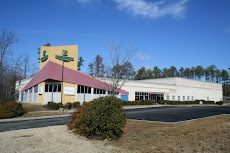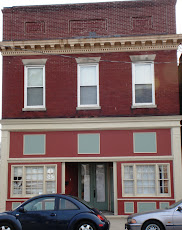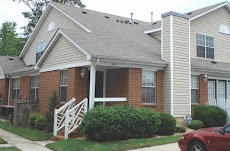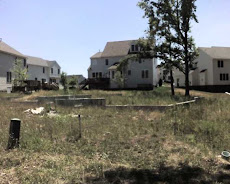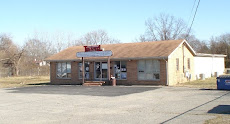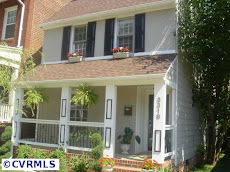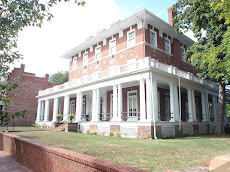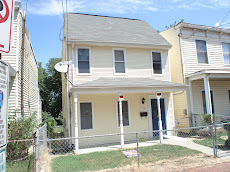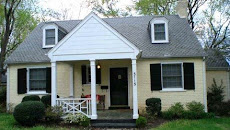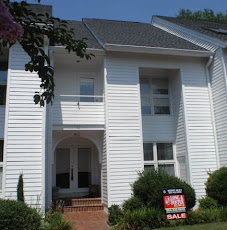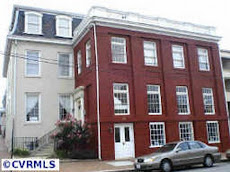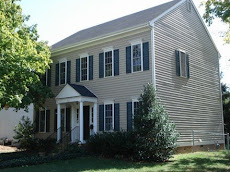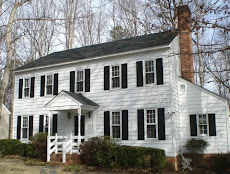By al harris
Developers have signed a contract to purchase the Reynolds Metals properties along the Canal Walk to build apartments, shops and restaurants.
This would finally open up the entire length of the Canal Walk, which previously had been blocked for pedestrians at the Reynolds site.
It has been called a developer’s dream. But for two local companies the chance to redevelop one of the most desirable swaths of downtown real estate is now a few steps closer to reality.
Fountainhead Development and WVS Companies have joined forces to buy the six-acre Reynolds Packaging facility at 10th and Byrd streets in downtown Richmond. The property consists of historic properties that were originally tobacco factories and newer buildings on the property were used to manufacture aluminum foil products.
The development partners signed a contract to buy the property last week for an undisclosed amount. The property is appraised at more than $13.7 million.
Rick Gregory, a principal of Fountainhead Development, said the first phase will involve renovation of the tobacco buildings into about 200 apartment units. Gregory said his firm teamed up with WVS, which are the developers of Rocketts Landing, to draw on each others strengths.
“Being that this site is so important and complex, it needed someone with expertise with adaptive reuse and historical tax credits which Fountainhead had, and expertise with new multi-floor construction which the Rockett’s people provide,” Gregory said.
Later construction phases will likely include a high rise, Gregory said. But any development on the site is at least a year away. Gregory said they expect to close on the property at the end of 2010 and would like to start construction in 2011. Over the next year the two firms will have to complete environmental studies as well as change the zoning. They will also have to secure all of the necessary financing.
Redevelopment of the Reynolds site would not only fulfill the dream for the developers, but also another dream held by Richmond’s leaders—a chance for the Canal Walk to rise to its full potential.
The City of Richmond completed the $52 million restoration of the Canal Walk in 1999. Properties in the district are part of a tax overlay district that funds the development and maintenance of the canal.
New businesses have opened along the canal, as well as towering residential buildings. But the amount of new businesses never reached “flood stage”, and neither did the swarms of tourists the Canal Walk was supposed to attract.
One obstacle to the Canal Walk’s success has been the Reynolds property, which is situated in the middle of the walkway and breaks it into two sections, rerouting visitors back to the street to traverse the entire path.
But Gregory said their development plan includes first floor retail space that will bring shops and restaurants alongside the canal.
“The key thing is revitalizing the canal, which is dead,” Gregory said, “We look forward to working with the city to fulfill their dream of finishing the canal walk project.”
Wednesday, February 24, 2010
Tuesday, February 23, 2010
Carytown to get a Facelift
by Andy Taylor
Carytown is getting a face lift.
You might not have noticed yet, because most of the work is still to come. But by summer, streetscape improvements should be quite noticeable, said Bob Broomfield, president of the Carytown Merchants Association. Broomfield is owner of the Play N Trade video game store.
In September, the city paved the entire stretch of Cary Street through the shopping district, as well as some of the connecting side streets, Broomfield said.
The next steps call for construction of brick crosswalks, extending curbings at selected corners along Cary , adding colored, rubberized matting at curbing cutouts to aid visually impaired pedestrians, and erecting a marble-and-metal Carytown entrance sign that will stand 20 feet high.
“I can’t say enough about how the city has stepped up,” Broomfield said. The city is funding the road work, and the Merchants Association is working out the funding for the sign, he added.
The brick crosswalks are intended to enhance the aesthetics of the area, he said. Brick crosswalks have been done in other areas of the city, such as along North Boulevard, just north of Broad Street .
The crosswalks, curb extensions and cutouts will initially be done at Carytown’s three busiest intersections: Dooley, Belmont and Sheppard streets, Broomfield said.
The curbing extensions, or “curbouts” as Broomfield calls them, will jut out about two feet into Cary Street at the corners of the selected intersections.
The curbouts are for safety, he said. They will allow a pedestrian to get far enough into the street where they can look around parked cars for oncoming traffic before they cross. They also will shorten the distance a person has in crossing the very busy Cary Street.
Another intention is to slow down traffic by making the car lane narrower where the curbouts are, he added.
Broomfield said he expects the crosswalk construction to begin in late spring, but a definite timetable hasn’t been set.
The curbing cutouts, which Broomfield called “step ups,” are designed to help the visually impaired in crossing the street. Broomfield said the “step ups” from the street to the sidewalk will have colored rubber matting to enhanced visibility.
Another thing the city is doing is replacing many of the traffic signs in the area, especially at locations such as Sheppard, where drivers have been known to turn in the wrong direction on the one-way Cary Street, Broomfield said.
Then there is the sign. The existing wooden Carytown sign near the Powhite Parkway is going to be replaced with a larger, more elaborate sign that will have a marble base, holding an Art Deco frame, where the Merchants Association will place posters promoting events.
“We wanted something that signified all that Carytown is about,” Broomfield said.
“We didn’t feel that the little wooden sign did that.”
He said the Merchants Association has been in talks with the city and ACORN (Association to Conserve Old Richmond Neighborhoods) about the creation of the sign.
The Carytown Merchants have been working with the city’s Department of Economic Development on many of the enhancements. The city is funding the road improvements on its own, but through a special tax assessment district partnership Carytown has struck with the city, it will allow for many other improvements, Broomfield said.
Owners and retailers in Carytown will pay a few cents extra per hundred on property taxes, and that money will be returned for specific improvement needs that the city agrees to, Broomfield said.
It will cover things such as marketing and putting up festive district flags, he said.
The city’s Department of Economic Development did not return calls to comment on this story.
Broomfield said he is very pleased that the tax money could be used for marketing. He sees marketing as one of the biggest needs for Carytown.
He said the Merchants Association is working to develop partnerships with hotels and the Virginia Museum of Fine Arts, among other organizations, to steer more visitors to Carytown.
Carytown is getting a face lift.
You might not have noticed yet, because most of the work is still to come. But by summer, streetscape improvements should be quite noticeable, said Bob Broomfield, president of the Carytown Merchants Association. Broomfield is owner of the Play N Trade video game store.
In September, the city paved the entire stretch of Cary Street through the shopping district, as well as some of the connecting side streets, Broomfield said.
The next steps call for construction of brick crosswalks, extending curbings at selected corners along Cary , adding colored, rubberized matting at curbing cutouts to aid visually impaired pedestrians, and erecting a marble-and-metal Carytown entrance sign that will stand 20 feet high.
“I can’t say enough about how the city has stepped up,” Broomfield said. The city is funding the road work, and the Merchants Association is working out the funding for the sign, he added.
The brick crosswalks are intended to enhance the aesthetics of the area, he said. Brick crosswalks have been done in other areas of the city, such as along North Boulevard, just north of Broad Street .
The crosswalks, curb extensions and cutouts will initially be done at Carytown’s three busiest intersections: Dooley, Belmont and Sheppard streets, Broomfield said.
The curbing extensions, or “curbouts” as Broomfield calls them, will jut out about two feet into Cary Street at the corners of the selected intersections.
The curbouts are for safety, he said. They will allow a pedestrian to get far enough into the street where they can look around parked cars for oncoming traffic before they cross. They also will shorten the distance a person has in crossing the very busy Cary Street.
Another intention is to slow down traffic by making the car lane narrower where the curbouts are, he added.
Broomfield said he expects the crosswalk construction to begin in late spring, but a definite timetable hasn’t been set.
The curbing cutouts, which Broomfield called “step ups,” are designed to help the visually impaired in crossing the street. Broomfield said the “step ups” from the street to the sidewalk will have colored rubber matting to enhanced visibility.
Another thing the city is doing is replacing many of the traffic signs in the area, especially at locations such as Sheppard, where drivers have been known to turn in the wrong direction on the one-way Cary Street, Broomfield said.
Then there is the sign. The existing wooden Carytown sign near the Powhite Parkway is going to be replaced with a larger, more elaborate sign that will have a marble base, holding an Art Deco frame, where the Merchants Association will place posters promoting events.
“We wanted something that signified all that Carytown is about,” Broomfield said.
“We didn’t feel that the little wooden sign did that.”
He said the Merchants Association has been in talks with the city and ACORN (Association to Conserve Old Richmond Neighborhoods) about the creation of the sign.
The Carytown Merchants have been working with the city’s Department of Economic Development on many of the enhancements. The city is funding the road improvements on its own, but through a special tax assessment district partnership Carytown has struck with the city, it will allow for many other improvements, Broomfield said.
Owners and retailers in Carytown will pay a few cents extra per hundred on property taxes, and that money will be returned for specific improvement needs that the city agrees to, Broomfield said.
It will cover things such as marketing and putting up festive district flags, he said.
The city’s Department of Economic Development did not return calls to comment on this story.
Broomfield said he is very pleased that the tax money could be used for marketing. He sees marketing as one of the biggest needs for Carytown.
He said the Merchants Association is working to develop partnerships with hotels and the Virginia Museum of Fine Arts, among other organizations, to steer more visitors to Carytown.
Thursday, February 18, 2010
New Life for a Great Art Deco Building in Church Hill
February 18, 2010 by Andy Taylor
The place was once frequented by the likes of Humphrey Bogart, John Wayne and Bette Davis. But that was so long ago.
In fact, a movie star hasn’t been on the screen there since 1970. That was the year the 850-seat East End Theater shut its doors, ending a run of 32 years.
The Art Deco building at 418 N. 25th St. has been steadily eroding ever since. The building’s exterior and marquee are rusting over. Vines grow up the walls. The roof is gone.
But a ray of light is shining through the rubble. Sterling Bilder Developers purchased the property Jan. 7 for $45,000. The company recently developed the Sterling Row Condominiums in Shockoe Bottom.
Sterling Bilder Vice President Joshua Bilder said, “We’re in the development phase and we’re looking at possibilities.”
There are basically three renovation scenarios on the table that would result in reopening as a theater, like the Byrd in Carytown, creating a community space with a theater on the first floor and galleries and studios on the second, or making it mixed-use, possibly with a restaurant and theater.
“The building has a lot of problems,” Bilder said. “One of the main problems is the roof. The first thing we need to do is get a roof on and stabilize the building.”
Bilder said the company has hired Watershed Architects to come up with a design for the roof, which he says the company plans to put on this year.
The finished renovation project, whichever way it goes, will be at least two or three years out, Bilder said.
He estimates renovation costs at $750,000 to $800,000.
“That’s a large number but there’s some incentives at the city and state levels, like grants and tax credits,” he said.
Rachel Flynn, the city’s director of community development, said her department had initial meetings with Sterling Bilder last week.
“The city has been trying to upgrade 25th Street, and this building is kind of a linchpin for redevelopment,” Bilder said.
Bilder said that he came here from New York about 10 years ago and that this is one of the properties Sterling Bilder identified years ago as a potential development site.
The property was tied up in family trusts for some time and was unavailable until recently, he said.
David Herring, executive director of ACORN (Alliance to Conserve Old Richmond Neighborhoods), said, “We’re thrilled that Josh is considering redeveloping this completely underutilized property.”
He agrees that the theater property is critical to upgrading the 25th Street corridor.
“The uses he’s proposing are appropriate,” Herring said. “I do not see a preservation fight for the theater at all.”
The East End would join other recent theater renovations if the project happens. The Robinson Theater Community Arts Center at 2903 Q St. in north Church Hill was redone and had a grand opening a year ago. The Hippodrome Theater on 2nd Street in Jackson Ward is slated for a $12 million restoration with a scheduled opening as a music club in April 2011.
Bilder was asked if his company would turn over the management of a movie theater or restaurant to someone else.
“I’ll be involved in management of this building. I’m going to manage the building,” Bilder said. “I’m committed to this project.”
The place was once frequented by the likes of Humphrey Bogart, John Wayne and Bette Davis. But that was so long ago.
In fact, a movie star hasn’t been on the screen there since 1970. That was the year the 850-seat East End Theater shut its doors, ending a run of 32 years.
The Art Deco building at 418 N. 25th St. has been steadily eroding ever since. The building’s exterior and marquee are rusting over. Vines grow up the walls. The roof is gone.
But a ray of light is shining through the rubble. Sterling Bilder Developers purchased the property Jan. 7 for $45,000. The company recently developed the Sterling Row Condominiums in Shockoe Bottom.
Sterling Bilder Vice President Joshua Bilder said, “We’re in the development phase and we’re looking at possibilities.”
There are basically three renovation scenarios on the table that would result in reopening as a theater, like the Byrd in Carytown, creating a community space with a theater on the first floor and galleries and studios on the second, or making it mixed-use, possibly with a restaurant and theater.
“The building has a lot of problems,” Bilder said. “One of the main problems is the roof. The first thing we need to do is get a roof on and stabilize the building.”
Bilder said the company has hired Watershed Architects to come up with a design for the roof, which he says the company plans to put on this year.
The finished renovation project, whichever way it goes, will be at least two or three years out, Bilder said.
He estimates renovation costs at $750,000 to $800,000.
“That’s a large number but there’s some incentives at the city and state levels, like grants and tax credits,” he said.
Rachel Flynn, the city’s director of community development, said her department had initial meetings with Sterling Bilder last week.
“The city has been trying to upgrade 25th Street, and this building is kind of a linchpin for redevelopment,” Bilder said.
Bilder said that he came here from New York about 10 years ago and that this is one of the properties Sterling Bilder identified years ago as a potential development site.
The property was tied up in family trusts for some time and was unavailable until recently, he said.
David Herring, executive director of ACORN (Alliance to Conserve Old Richmond Neighborhoods), said, “We’re thrilled that Josh is considering redeveloping this completely underutilized property.”
He agrees that the theater property is critical to upgrading the 25th Street corridor.
“The uses he’s proposing are appropriate,” Herring said. “I do not see a preservation fight for the theater at all.”
The East End would join other recent theater renovations if the project happens. The Robinson Theater Community Arts Center at 2903 Q St. in north Church Hill was redone and had a grand opening a year ago. The Hippodrome Theater on 2nd Street in Jackson Ward is slated for a $12 million restoration with a scheduled opening as a music club in April 2011.
Bilder was asked if his company would turn over the management of a movie theater or restaurant to someone else.
“I’ll be involved in management of this building. I’m going to manage the building,” Bilder said. “I’m committed to this project.”
Monday, February 1, 2010
The Condo Market in Richmond - Much lower inventory, but financing can be tricky. FHA eases restrictions on approval process
When will condos rebound?
February 1, 2010 by Al Harris
Bigger isn’t always better.
That’s proving true in several senses for condo developers around Richmond.
Take the case of the Hamlet Cleaners conversion project on Stafford Avenue in the Fan.
Chris Johnson of Monument Construction converted a defunct dry cleaners into 16 units priced between $119,000 and $209,000. Since finishing construction in August, he has sold 11 of the units.
That’s probably the envy of the local condo industry.
At the much more ambitious Miller and Rhoads condos downtown, Taylor Steele, an agent for Virginia Realty & Relocation, said they’ve closed on seven units out of 133 since coming online in the spring. But interest is high, he said, with 10 to 20 showings a day on the weekends.
One obstacle facing the Miller and Rhoads project is that it cannot get lending approval from the Federal Housing Authority, and without that buyers have a much harder time getting financing.
It has become much harder for first-time homebuyers to qualify for conventional mortgages to buy a condo unit. FHA-approved loans have taken a bigger share of the market, because borrowers only have to put 3.5 percent down. (The agency recently began requiring 10 percent down for buyers with a credit score below 580).
To receive an FHA loan to buy a condo, the building had to be at least 50 percent owner occupied. As more buyers began to rely on these loans, it has made selling much harder, especially for large projects like Rocketts Landing and Miller & Rhoads, which were conceived when credit was easier to get.
In December, FHA lowered the occupancy requirement to 30 percent to make it easier for buildings to qualify.
For some it is easier than others. Hamlet Cleaners needed to sell only six. Miller and Rhoads would have to sell 40. And even then there are FHA lending restrictions on projects attached to commercial space that they will have to overcome.
The developer at Miller & Rhoads has worked out a special loan program with C&F Mortgage Corporation, Village Bank and Franklin Federal Savings Bank to offer fixed-rate loans for 50 percent to 80 percent of the purchase price. And the developer, New Orleans-based HIR Properties, is proving second mortgages for 15 percent of the price.
Bigger condo projects typically sell units at various price points. Those on the lower end seem to be selling better. And prices for the lower units are holding steady while more expensive ones require price cuts to sell. Prices have fallen as much as 20 percent from mid-2008, according to several agents.
But future price cuts are less likely, agents and developers say, because supply is starting to fall. According to the Multiple Listing Service, this time last year there were 400 condos listed in area 10 (which primarily includes most of Downtown, the Fan and the Museum District.) Now there are 151 condos for sale.
“We have more than halved the inventory available at the beginning of last year,” said Rick Jarvis, a Realtor for One South Realty who represents several condo properties in Richmond.
“Right now, depending on absorption, we may only have a three- to six-month supply,” he said.
Jarvis and other agents say the combination of lower inventory and continued demand means that prices might have bottomed out.
But there are other factors at play: Rising unemployment and increasing foreclosures could spell trouble.
Ian Coates, operations manage for First Colonial Appraisals, said that what the industry refers to as “looming shadow inventory” could pose a problem.
That is “people sitting on the fence thinking it’s not a good time to sell and they’ll wait until spring. When everyone comes out of the woodwork to sell, there will be a lot of supply, possibly having an impact on prices,” said Coates.
The shadow inventory includes possible foreclosures. An unexpected surge in supply could keep developers from wanting to build new condos.
Building has come to halt as developers retreat to the sidelines and try to sell the units they have on the market. Most of the multifamily construction projects around Richmond are for apartments.
Johnson, of Monument Construction, said he will wait until about half of the remaining 33 units he has available are sold before planning any new projects. He said he started last year with 96 units completed or under development.
Although the supply of new condos is shrinking, Johnson isn’t expecting a boom right away. He expects new development to occur in a piecemeal fashion. For one thing, he said, it takes about 12 months lead time to get a project underway
Bill Chapman, who has overseen the development of several condo projects in Richmond, said that because of the FHA pickle, banks are less excited to lend to new construction projects.
“I think you have a hard time finding a bank lending on a condominium project because they have a hard time achieving those presales [for FHA financing],” said Chapman.
Chapman said he plans on closing in the next month on a former cold storage building in Shockoe Bottom and building 14 apartment units.
“If the market is improving right now and inventory was reduced by 250 units last year, we’ll be looking at better times soon.”
February 1, 2010 by Al Harris
Bigger isn’t always better.
That’s proving true in several senses for condo developers around Richmond.
Take the case of the Hamlet Cleaners conversion project on Stafford Avenue in the Fan.
Chris Johnson of Monument Construction converted a defunct dry cleaners into 16 units priced between $119,000 and $209,000. Since finishing construction in August, he has sold 11 of the units.
That’s probably the envy of the local condo industry.
At the much more ambitious Miller and Rhoads condos downtown, Taylor Steele, an agent for Virginia Realty & Relocation, said they’ve closed on seven units out of 133 since coming online in the spring. But interest is high, he said, with 10 to 20 showings a day on the weekends.
One obstacle facing the Miller and Rhoads project is that it cannot get lending approval from the Federal Housing Authority, and without that buyers have a much harder time getting financing.
It has become much harder for first-time homebuyers to qualify for conventional mortgages to buy a condo unit. FHA-approved loans have taken a bigger share of the market, because borrowers only have to put 3.5 percent down. (The agency recently began requiring 10 percent down for buyers with a credit score below 580).
To receive an FHA loan to buy a condo, the building had to be at least 50 percent owner occupied. As more buyers began to rely on these loans, it has made selling much harder, especially for large projects like Rocketts Landing and Miller & Rhoads, which were conceived when credit was easier to get.
In December, FHA lowered the occupancy requirement to 30 percent to make it easier for buildings to qualify.
For some it is easier than others. Hamlet Cleaners needed to sell only six. Miller and Rhoads would have to sell 40. And even then there are FHA lending restrictions on projects attached to commercial space that they will have to overcome.
The developer at Miller & Rhoads has worked out a special loan program with C&F Mortgage Corporation, Village Bank and Franklin Federal Savings Bank to offer fixed-rate loans for 50 percent to 80 percent of the purchase price. And the developer, New Orleans-based HIR Properties, is proving second mortgages for 15 percent of the price.
Bigger condo projects typically sell units at various price points. Those on the lower end seem to be selling better. And prices for the lower units are holding steady while more expensive ones require price cuts to sell. Prices have fallen as much as 20 percent from mid-2008, according to several agents.
But future price cuts are less likely, agents and developers say, because supply is starting to fall. According to the Multiple Listing Service, this time last year there were 400 condos listed in area 10 (which primarily includes most of Downtown, the Fan and the Museum District.) Now there are 151 condos for sale.
“We have more than halved the inventory available at the beginning of last year,” said Rick Jarvis, a Realtor for One South Realty who represents several condo properties in Richmond.
“Right now, depending on absorption, we may only have a three- to six-month supply,” he said.
Jarvis and other agents say the combination of lower inventory and continued demand means that prices might have bottomed out.
But there are other factors at play: Rising unemployment and increasing foreclosures could spell trouble.
Ian Coates, operations manage for First Colonial Appraisals, said that what the industry refers to as “looming shadow inventory” could pose a problem.
That is “people sitting on the fence thinking it’s not a good time to sell and they’ll wait until spring. When everyone comes out of the woodwork to sell, there will be a lot of supply, possibly having an impact on prices,” said Coates.
The shadow inventory includes possible foreclosures. An unexpected surge in supply could keep developers from wanting to build new condos.
Building has come to halt as developers retreat to the sidelines and try to sell the units they have on the market. Most of the multifamily construction projects around Richmond are for apartments.
Johnson, of Monument Construction, said he will wait until about half of the remaining 33 units he has available are sold before planning any new projects. He said he started last year with 96 units completed or under development.
Although the supply of new condos is shrinking, Johnson isn’t expecting a boom right away. He expects new development to occur in a piecemeal fashion. For one thing, he said, it takes about 12 months lead time to get a project underway
Bill Chapman, who has overseen the development of several condo projects in Richmond, said that because of the FHA pickle, banks are less excited to lend to new construction projects.
“I think you have a hard time finding a bank lending on a condominium project because they have a hard time achieving those presales [for FHA financing],” said Chapman.
Chapman said he plans on closing in the next month on a former cold storage building in Shockoe Bottom and building 14 apartment units.
“If the market is improving right now and inventory was reduced by 250 units last year, we’ll be looking at better times soon.”
Subscribe to:
Posts (Atom)



